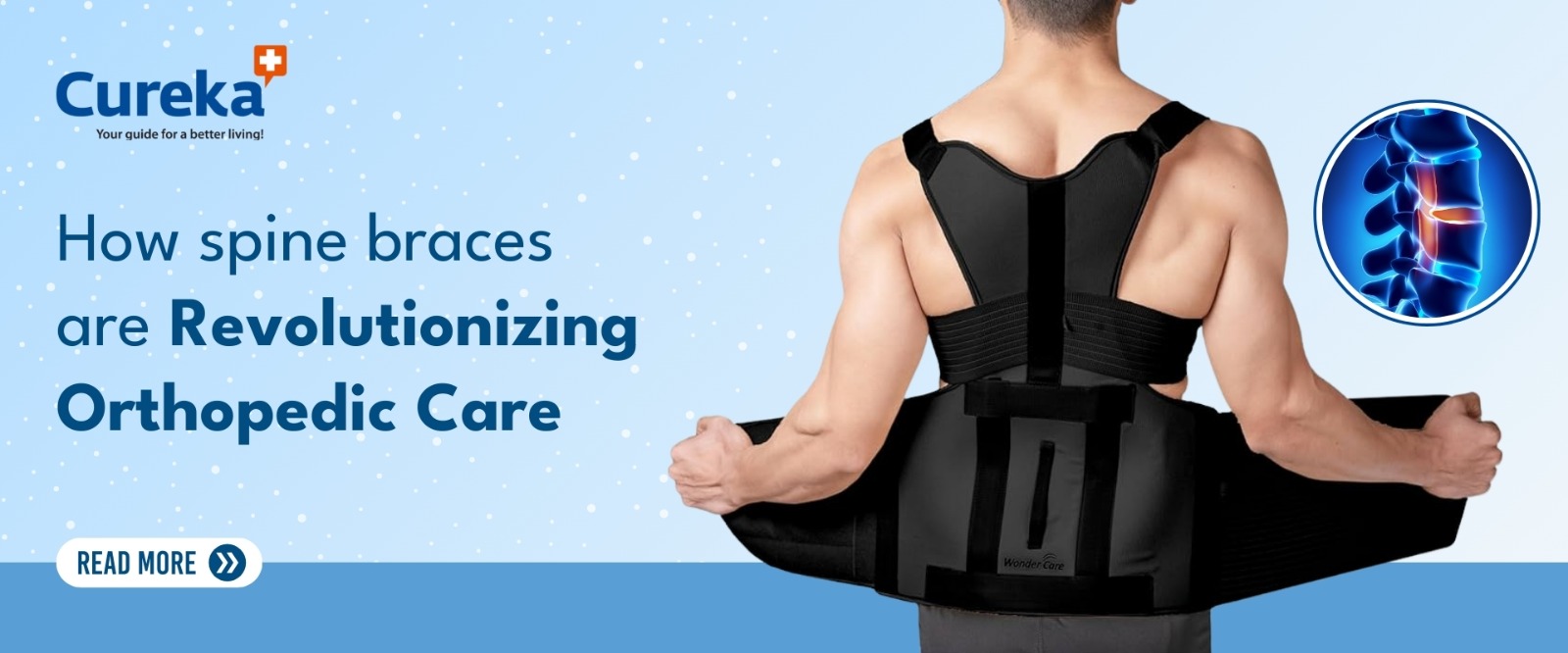How Spine Braces Are Revolutionizing Orthopedic Care
Spinal braces, or orthoses, play a pivotal role in managing and improving various spinal conditions. Whether you’re an adolescent dealing with scoliosis or an adult managing degenerative spinal issues, understanding the purpose, benefits, and limitations of spinal braces is essential for optimizing their use. This blog delves into everything you need to know about spinal braces, focusing on their applications, benefits, and current research.
1. Understanding Spinal Braces
A spinal brace is a medical device designed to stabilize, support, and sometimes correct spinal deformities. These devices are commonly used for conditions such as:
- Adolescent Idiopathic Scoliosis (AIS): A prevalent spinal disorder in adolescents, where early detection and bracing can arrest curve progression.
- Degenerative Scoliosis: Common in adults due to age-related spinal changes, requiring bracing to manage pain and provide support.
- Postoperative Recovery: Used after spinal surgeries to stabilize the spine and promote healing.
- Trauma Management: Braces provide immobilization and support for fractures or injuries.
2. How Spinal Braces Help
Managing Scoliosis
In adolescents with idiopathic scoliosis, spinal braces are most effective in patients with flexible curves less than 45 degrees. By applying consistent pressure, these braces prevent curve progression and, in some cases, reduce the need for surgical intervention. In adults with progressive scoliosis, bracing may alleviate pain and improve posture, though its impact on curve correction is limited.
Pain Relief
For adults with conditions like progressive degenerative scoliosis or herniated discs, spinal braces provide support and reduce strain on affected areas. This can help alleviate chronic pain without the need for invasive treatments or reliance on medication.
Post-Surgery Stabilization
Spinal braces are frequently recommended following surgeries like spinal fusions. By limiting movement, they help the spine heal in proper alignment and reduce the risk of complications. However, the effectiveness of postoperative bracing remains a topic of debate in the medical community.
Enhanced Mobility
While spinal braces are primarily designed for support, modern designs emphasize mobility. Lightweight materials and ergonomic fits ensure users can perform daily activities with greater comfort and confidence.
3. Benefits of Spinal Braces
Spinal braces offer numerous benefits, particularly when used as part of a comprehensive treatment plan:
- Non-Invasive Management: Bracing can often eliminate the need for surgical interventions, especially in skeletally immature adolescents.
- Customizable Support: Advanced bracing technology allows for tailored solutions that address individual spinal conditions.
- Improved Posture: By aligning the spine, braces can improve posture, reducing the risk of future complications.
- Pain Reduction: Supportive braces relieve pressure on sensitive areas, providing significant pain relief for conditions like herniated discs and degenerative scoliosis.
- Prevention of Curve Progression: Early bracing in adolescents can halt or slow the progression of scoliosis, potentially avoiding surgical correction.
4. Limitations and Challenges
While spinal braces are invaluable for many patients, they have limitations that users should understand:
- Limited Impact on Adults: In skeletally mature adults, bracing has minimal effect on altering the natural progression of deformities.
- Compliance Challenges: Effectiveness depends on wearing the brace as prescribed, which can be difficult for some patients.
- Postoperative Benefits: The efficacy of braces for postoperative recovery varies, with limited evidence supporting their universal use.
- Psychological Impact: Adolescents, in particular, may experience emotional or social challenges while wearing braces.
5. Current Research and Gaps in Evidence
Despite the widespread use of spinal braces, more robust clinical trials are needed to establish their efficacy across various conditions. For example:
- Adolescent Idiopathic Scoliosis (AIS): While bracing is well-documented for AIS, further research could optimize brace designs and wearing protocols.
- Adult Scoliosis: Existing studies on bracing for progressive idiopathic and degenerative scoliosis in adults are of low quality, often focusing on female patients with thoracolumbar and lumbar curves. Comprehensive trials could offer clearer insights.
- Postoperative Bracing: The benefits of bracing post-surgery remain debatable, underscoring the need for more conclusive evidence.
6. Choosing the Right Brace
Selecting the appropriate spinal brace depends on several factors:
- Condition and Diagnosis: Specific braces are tailored to scoliosis, kyphosis, or postoperative needs.
- Age and Skeletal Maturity: Adolescents and adults may require different brace designs based on skeletal flexibility.
- Comfort and Fit: A properly fitted brace ensures compliance and effectiveness. Custom-molded braces are often recommended.
- Lifestyle Needs: Lightweight, breathable materials and ergonomic designs improve wearability during daily activities.
7. Tips for Maximizing the Benefits of a Spinal Brace
To make the most of your spinal brace, follow these best practices:
- Adhere to Usage Guidelines: Wear the brace for the prescribed duration each day to achieve optimal results.
- Regular Adjustments: Ensure your brace is regularly checked and adjusted by a healthcare professional to maintain its effectiveness.
- Practice Complementary Therapies: Combine bracing with physical therapy or exercise to strengthen spinal muscles.
- Stay Informed: Keep up with the latest research and recommendations for your specific condition.
- Focus on Mental Well-Being: Seek support to address any emotional challenges associated with wearing a brace.
8. Future of Spinal Braces
Advancements in technology are paving the way for more effective and patient-friendly spinal braces. Innovations include:
- Smart Braces: Devices equipped with sensors to monitor usage and provide real-time feedback.
- Improved Materials: Lightweight, durable, and breathable materials enhance comfort and compliance.
- Personalized Designs: 3D printing enables precise customization for individual needs.
Conclusion
Spinal braces are an integral part of managing and improving spinal health for both adolescents and adults. While their efficacy varies depending on the condition and patient demographics, their benefits in pain relief, posture correction, and mobility enhancement are well-documented. By understanding the strengths and limitations of spinal braces and adhering to best practices, patients can maximize their outcomes and lead more comfortable, confident lives. For ongoing care, consult with your healthcare provider to ensure your spinal brace meets your evolving needs.
References:
- Bracing for scoliosis – 2008 Sep – https://pubmed.ncbi.nlm.nih.gov/18812914/
- A systematic literature review of spinal brace/orthosis treatment for adults with scoliosis between 1967 and 2018: clinical outcomes and harms data- 2020 Feb – https://pubmed.ncbi.nlm.nih.gov/32035480/











